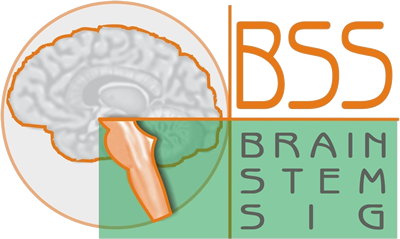 The Brainstem Special Interest Group [BSS] has developed from the former Brainstem Society [BSS]. The Brainstem Society was founded in the 1990s by a group of clinicians and researchers devoted to the brainstem. The Brainstem Society has organized several international meetings every three to four years, which have resulted in several publications.
The Brainstem Special Interest Group [BSS] has developed from the former Brainstem Society [BSS]. The Brainstem Society was founded in the 1990s by a group of clinicians and researchers devoted to the brainstem. The Brainstem Society has organized several international meetings every three to four years, which have resulted in several publications.
The Brainstem SIG [BSS] was first established in 2018 after the previous Brainstem Society was transformed into a Brainstem SIG within the International Federation of Clinical Neurophysiology. Our new name, “Brainstem SIG,” allows us to continue using our former abbreviation, “BSS,” in our logo.
The Brainstem SIG is devoted to the brainstem and all its aspects, from anatomy to neurophysiology, from form to function, and from health to disease. The brainstem is a small but most important center in the brain. It serves as a central relay station between the spinal cord, cerebellum, and cerebrum and is intricately involved in functions ranging from motor control, sensorimotor integration, and regulation of autonomic functions to consciousness and attention. Brainstem anatomy and physiology of brainstem functions are complex, and pathophysiological mechanisms are often difficult to understand.
With the Brainstem SIG, we want to provide a platform for exchanging ideas evolving around the brainstem and for promoting further knowledge about its physiology and pathophysiology. The Brainstem SIG is open to everybody, i.e., clinicians, researchers, technicians, etc. Like the Brainstem Society in the past, which has been a multidisciplinary organization, also the Brainstem SIG will be a multidisciplinary organization: it is not necessary to be affiliated with any National Society of Clinical Neurophysiology or any other organization to be or become a member of the Brainstem SIG. There is no membership fee, and no formal membership is necessary. People who are interested are encouraged to send an email to the Secretary in order to be entered into the mailing list.
A formal General Assembly was held at the last international meeting, the International Congress of Clinical Neurophysiology 2022, in Geneva, Switzerland, and a new Scientific Board was established.
Brainstem SIG activities since its official foundation at the International Congress of Clinical Neurophysiology 2018 in Washington, DC, USA:
The program of the International Congress of Clinical Neurophysiology 2024 in Jakarta, Indonesia, will be announced soon. https://iccn-2024.com/programme/glance
One of the plenary lectures will be held by Josep Valls-Solé, Spain: "On voluntary actions and reflex reactions." Please come to meet us at the International Congress of Clinical Neurophysiology 2024 in Jakarta, Indonesia.
If you are interested in the brainstem, please let us know!
Markus Kofler, MD, Department of Neurology, Hochzirl Hospital, A-6170 Zirl, Austria
Email: markus.kofler@i-med.ac.at
Aysegul Gunduz, MD, Department of Neurology, Cerrahpasa Medical Faculty, Istanbul University-Cerrahpasa
Email: aysegul.gunduz@iuc.edu.tr
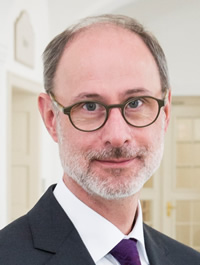 |
Markus Kofler, MDWorking group leaderProfessor of Neurology |
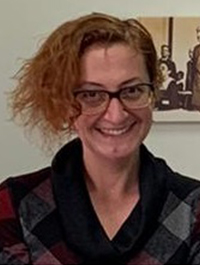 |
Aysegul Gunduz, MDSecretaryDepartment of Neurology |
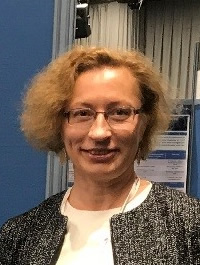 |
Satu Jääskeläinen, MD, PhDScientific Board MemberProfessor of Clinical Neurophysiology |
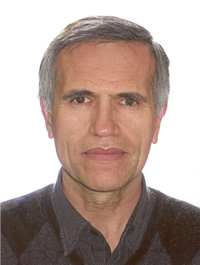 |
Josep Valls-SoléScientific Board MemberBarcelona, Spain
|
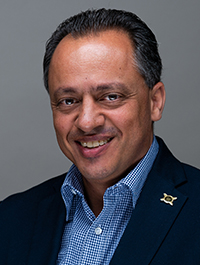 |
Eleftherios S PapathanasioumScientific Board MemberNicosia, Cyprus |
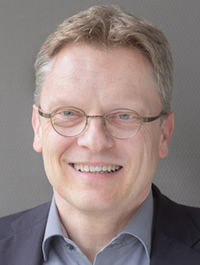 |
Jens EllrichScientific Board MemberErlangen, Germany |
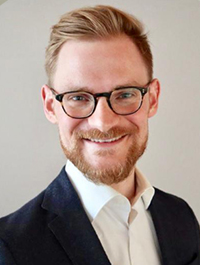 |
Maximilian FriedrichScientific Board MemberWuerzburg, Germany |
 |
Daniel GoldScientific Board MemberAssociate Professor of Neurology, Ophthalmology, Neurosurgery, Otolaryngology The John Hopkins Hospital |
The brainstem is a small but most important center in the brain. It serves as a central relay station between spinal cord, cerebellum and cerebrum and is intricately involved in functions ranging from motor control, sensorimotor integration and regulation of autonomic functions to consciousness and attention. Brainstem anatomy and physiology of brainstem functions are complex, and pathophysiological mechanisms are often difficult to understand. The BrainStem Society, which was founded in the 1990s, is a club of scientists interested in unraveling some of the unsolved mysteries of brainstem function. Since then five international meetings have been organized: 1998 in Barcelona, Spain; 2001 in Amsterdam, Netherlands; 2004 in Rome, Italy; 2007 in Mainz, Germany; and 2010 in London, United Kingdom. The main focus of the BrainStem Society has always been neurophysiology, but at the same time the club has been open to related specialties. This is reflected in the scientific programs of previous meetings, and also in the selection of articles in this issue. Further information can be found at: www.brainstemsociety.com.
In this special section, the following 10 articles are based on invited lectures at the 5th International Meeting of the BrainStem Society, December 09–10, 2010, held at the National Hospital for Neurology and Neurosurgery, Queen Square, London, United Kingdom. They cover a broad spectrum of brainstem anatomy, neurophysiology, neuropharmacology, movement disorders, pain and intraoperative neuromonitoring.
The reviews begin with a survey by Prats-Galino et al. (2012) of the functional organization of the main human brainstem centers and circuits, in which novel data from 7-tesla high-resolution magnetic resonance imaging, diffusion tensor imaging, and diffusion tensor tracking in post-mortem material, is complemented by a conventional fiber tracking study of the descending pathways in vivo. A set of fascinating figures and a video accompany this excellent paper. It is followed by a masterly survey of the role of neurophysiology in the study of brainstem functions, with a particular emphasis on methods devoted to measuring excitability of neural circuits. Valls-Solé (2012) describes how changes in brainstem reflex excitability can be evaluated via the blink reflex by single or paired stimuli, or via the startle reaction by single or repeated stimulation and points out that these may reflect dysfunction not only in the reflex arc itself, but also at distant sites, e.g. in the basal ganglia. Furthermore, he describes how both reflexes can be modulated by low-intensity stimuli that may induce prepulse inhibition or facilitation. The next paper also deals with the startle reaction and the role of brainstem pathways in motor function. Carlsen et al. (2012) review studies of advance preparation of the motor system during various movement tasks. A startling acoustic stimulus presented during a simple reaction time task results in substantial reduction in response time, suggesting a subcortical mechanism for response triggering. Startling acoustic stimuli applied during voluntary motor tasks can reveal if and when advance motor preparation occurs and whether this process changes with practice. Based on recent data the authors propose an updated model of how a startle reaction may interact with motor system preparation and response initiation. Dreissen et al. (2012) from Marina Tijssen›s group provide an excellent overview about syndromes displaying an exaggerated startle reflex. This response originates in the caudal brainstem following an unexpected stimulus, and comprises an initial bilateral motor reaction and a second orienting response with emotional and voluntary behaviors. The authors distinguish three main categories of clinical syndromes with exaggerated startles: hyperekplexia, stimulus-induced disorders, and neuropsychiatric syndromes. Classification remains challenging, but distinct clinical motor features identified in polymyography may help identify hyperekplexia, while stimulus-induced disorders may require video recordings in addition to careful clinical evaluation. Neuropsychiatric disorders usually have additional behavioral and psychiatric symptoms. Kumru and Kofler (2012) provide a focused overview of recent studies revealing how neurophysiological testing can demonstrate neuronal reorganization in patients with spinal cord injury not only below the lesion and at the cerebral cortex, but also at the brainstem level. They were able to demonstrate and quantify the amount and timing of intrathecal baclofen effects on various brainstem reflexes, and by correlating their findings with clinical changes in muscle tone were able to propose that there are previously disregarded antispastic effects of baclofen at the brainstem level. Findings of altered brainstem reflexes in spinal cord injury and their responsiveness to pharmacological interventions contribute to the understanding of mechanisms underlying functional changes following injury to the central nervous system. Remote pharmacological effects of botulinum toxin are summarized by Palomar and Mir (2012), who provide an extensive review of changes at the spinal, brainstem, and cortical level following botulinum toxin injections for the treatment of focal spasticity or dystonia. Although the primary action of botulinum toxin occurs at the neuromuscular junction where it produces biochemical denervation, remote effects can be demonstrated by refined neurophysiological techniques. Central changes may be due to retrograde transport and transcytosis of the toxin to neurons in the central nervous system. In addition there may be interference with and modification of spinal, brainstem and cortical circuits secondary to altered sensory afferent input from intrafusal fibers of the injected muscle.
The following two papers examine the role of the cerebellum in two clinical conditions, essential tremor and dystonia. Raethjen and Deuschl (2012) discuss in their review up-to-date concepts of essential tremor, which emerges not from one single oscillator but from an oscillatory network comprising most parts of the physiological central motor network. Inferior olive and cerebellum serve as key structures, which are linked via thalamus to cortical motor areas that are, however, only intermittently entrained in tremor generation. Each of the network components may act as an oscillator on its own with dynamically changing contributions to whole network function. Paradoxically the same network that produces pathological tremor also governs voluntary movements, but the interaction within the network determines the emerging type of movement. The central role of the thalamus with a bidirectional mode of thalamocortical interaction seems to be critical for the development of involuntary tremor as opposed to the mainly unidirectional interaction in voluntary motor control, and this difference likely represents one basis for the selective tremor-effect of thalamic deep brain stimulation.
Sadnicka et al. (2012) from Mark Edwards’ group examine recent and controversial ideas about a role of the cerebellum in the pathophysiology of dystonia, based on intimate structural and functional connections between cerebellum and basal ganglia that appear to be involved in patients with dystonia, which is usually associated with a disorder of the basal ganglia. They summarize experimental, clinical, imaging, and neurophysiological data suggesting that in most forms of dystonia the cerebellum shows abnormal, probably compensatory activity, secondary to pathology elsewhere within the sensorimotor network. However, certain subtypes of dystonia have typical cerebellar patterns of altered cortical inhibition, or abnormal eyeblink classical conditioning, suggesting cerebellar dysfunction may in some cases even play a primary causative pathophysiological role. Jääskeläinen (2012) surveys in her excellent review recent concepts of primary burning mouth syndrome, a severe chronic intraoral pain condition which mostly affects elderly women. Three distinct subcategories can be defined neurophysiologically, which are associated with specific etiological mechanisms: (1) peripheral small fiber neuropathy, (2) subclinical major trigeminal neuropathy with pain, and (3) central pain that may be related to deficient top-down inhibition mediated via brain dopamine system. These three subgroups may overlap in individual patients. A combination of neurophysiologic, psychophysical, neuropathological, and functional brain imaging methods is required to diagnose accurately the subtype of primary burning mouth syndrome, which is prerequisite to successful differential treatment strategies specifically targeted at underlying pathophysiological mechanisms. Finally, intraoperative neuromonitoring was introduced to the BrainStem Society for the first time by Fernández-Conejero et al. (2012), who review in detail the practical importance of using comprehensive intraoperative facial nerve monitoring during microvascular decompression for hemifacial spasm. Their technique, which includes facial corticobulbar motor evoked potentials, blink reflex, facial F wave, and lateral spread responses, not only helps to guide the neurosurgeon and to predict the effectiveness of the intervention, but also to provide new insight into the pathophysiology of hemifacial spasm.
References
John Rothwell, Institute of Neurology, University College of London, Sobell Department of Motor Neuroscience and Movement Disorders, London, UK
Markus Kofler, Hochzirl Hospital, Department of Neurology, 6170 Zirl, Austria, telephone: +43 5238 501 44100; fax: +43 5238 501 45056; email address; Available online 17 November 2011.
The Brainstem Society celebrated its 6th International Meeting in 2014 in Berlin, under the umbrella of the 30th International Congress of Clinical Neurophysiology. The scientific program covered mostly neurophysiological aspects of brainstem functions and dysfunctions, including basic physiology, movement disorders, pain and other related topics. Among the 17 oral communications and 31 posters presented in the Meeting, the organization chose a number for preparation of manuscripts to be submitted to Clinical Neurophysiology for publication as original research articles or reviews. Three of them have actually been transformed into real articles that are gathered together in this issue to illustrate the variety and complexity of brainstem function.
In the paper by De Natale et al. (2015), the authors report on the analysis of vestibular evoked myogenic potentials (VEMPs) in patients with Parkinson’s disease. There is increasing interest in VEMPs as a tool for evaluation of vestibular functions. An interesting aspect of this work is that the authors examined the battery of all VEMPs, i.e., cervical, masseter and ocular. This may be a useful approach to look for abnormalities to reflect global dysfunction of vestibular-related brainstem pathways. Indeed, the origin of abnormal responses can be not only in the vestibular system, but also in brainstem connections or circuits. The authors actually found a significant correlation between the brainstem dysfunction shown with VEMPs and clinical severity, especially postural instability and REM behavior disorder. This work shows the utility of VEMPs as markers of degeneration of brainstem structures. In the paper by Pettorossi et al. (2015), the authors studied the effect of vibration over the neck muscles on body motion perception. The effects depended on the function of the muscle where vibration was applied. They lasted several hours, depending on the frequency and duration of the vibration. The outcome measure was the tracking position error (TPE), which was measured as the error in degrees made when the body is rotated fast towards one direction and slowly in the opposite direction to return to the same initial position. This clever test shows how the vestibular apparatus is limited to detecting low-velocity movements. Vibration of neck muscles modified the effects, either increasing or decreasing the TPE, depending on what muscles and side the vibrator was put on. This demonstrates that perception of whole body position does not depend only on vestibular information but also on the proprioception from neck muscles. This article demonstrates how much there is still to learn on how we integrate our body sensations. In the paper by Castellote and Valls-Solé (2015), the authors investigated the trade-off between accuracy and speed when performing a fast pointing task involving the forearm. The authors showed that movements of this kind could be divided into two parts: a ballistic initial movement and a slower approaching (homing) movement. Only the initial part was speeded-up when a startling auditory stimulus (SAS) is added to the imperative signal, the second part then being slower to compensate for the eventual disturbance caused in the program by the StartReact phenomenon. The physiology of the motor system is still unclear. The combination of a startle (reflex) reaction and task execution (voluntary) is a useful tool to investigate the characteristics of the motor program.
Each one of these articles is based on events that take place at the brainstem, either in the nuclei or in the circuits implicated in reflex responses, integration of sensory signals or subcortical motor programming. The brainstem is an important center for data processing, a crossroad of information and integration of signals, and distributor of commands that contribute to the smoothness and efficacy of the motor program. Clinical neurophysiology is likely the most important tool for the study of brainstem functions and reflexes. The Brainstem Society is proud to contribute these articles to deepen our knowledge of brainstem circuits in healthy subjects and in patients. We thank the International Federation of Clinical Neurophysiology for its help in the development of and outcome from our Meeting.
References
Josep Valls-Solé, Unitat d’Electromiografia, Servei de Neurologia, Hospital Clínic, Universitat de Barcelona, IDIBAPS (Institut d’Investigació Biomèdica August Pi i Sunyer), Barcelona 08036, Spain, telephone: +34 932075413; email address; Available online 21 July 2015.
8:00 AM–5:00 PM
BrainStem Society Meeting
Location: Delaware A
Developed in conjunction with the BrainStem Society
Co-Directors: Josep Valls-Solé, MD (Spain) and Mark Hallett, MD, FACNS (USA)
Objectives:
At the conclusion of this course, participants should be able to:
Agenda:
8:00 AM
Opening of the Meeting
Mark Hallett, MD, FACNS (USA)
Eye and Eyelid Movements
Chairs: Mark Hallett, MD, FACNS (USA)
8:15 AM
Spontaneous, Voluntary and Reflex Blinking in Clinical Practice
Josep Valls-Solé, MD (Spain)
8:45 AM
Basics of Ocular Motor Control by the Brainstem
David S. Zee, MD (USA)
9:15 AM
Eye Movement Disorders due to Brainstem Dysfunctions
Daniel Gold, DO (USA)
9:45 AM Break
Respiration and Sleep
Co-Chairs: Markus Kofler, MD (Austria) and Jens Ellrich, MD, PhD (Germany)
10:00 AM
Functional Anatomy, Mechanisms of Respiration
Jeffrey C. Smith, PhD (USA)
10:30 AM
Disorders of Respiration During Sleep
Nancy Foldvary-Schaefer, DO, MS (USA)
11:00 AM
Facial Pain Syndromes: Differential Diagnoses
Satu Jaaskelainen, MD, PhD (Finland)
11:30 AM
Relevance of Brainstem to Pain: Nociceptive System and PGM
Andrea Truini, MD (Italy)
12:00 Noon
Lunch
Vestibular System
Co-Chairs: Josep Valls-Solé, MD (Spain) and Andrea Truini, MD (Italy)
1:30 PM
Brainstem and Cerebellum Control of Balance and Equilibrium
John Rothwell, PhD (United Kingdom)
2:00 PM
How to Study Vestibular Nuclei: cvEMP and ovEMP
James G. Colebatch, DSc, FRACP (Australia)
2:30 PM Break
Other Brainstem Functions
3:00 PM
Startle and the StartReact Effect: Physiological Mechanisms
Anthony Carlsen, PhD (Canada)
3:30 PM
Autonomic Dysfunction: Vagal Nerve Disorders
Lucy Norcliffe-Kaufmann, PhD (USA)
Non-Invasive Therapy-Oriented Stimulation of Cranial Nerves
4:00 PM
State of the Art in Vagus Nerve Stimulation
Jens Ellrich, MD, PhD (Georgia)
4:30 PM
State of the Art in Trigeminal Nerve Stimulation
Ian Cook, MD, DFAPA (USA)
5:00 PM to 6:00 PM
BrainStem Society Business Meeting
THURSDAY, MAY 3, 2018
7:00 AM–10:30 AM
BrainStem Society Meeting (continued from Tuesday, May 1)
Location: Delaware
Co-Directors: Mark Hallett, MD, FACNS (USA) and Josep Valls-Solé, MD (Spain)
Agenda:
Focus on the Pedunculo-Pontine Nucleus
Co-Chairs: John Rothwell, PhD (USA) and Satu Jaaskelainen, MD, PhD (Finland)
7:00 AM Welcome
7:15 AM
Anatomy of the Reticular Formation and the PPN
Clifford B. Saper, MD, PhD (USA)
7:45 AM
Functions of the PPN
Edgar Garcia-Rill, PhD (USA)
8:15 AM
Prepulse Inhibition
Markus Kofler, MD (Austria)
8:45 AM
The PPN and Freezing of Gait
Jorik Nonnekes, MD, PhD (Netherlands)
9:15 AM
PPN DBS: Indications and Potential Secondary Effects
Andres Lozano, MD, PhD, FRCSC, FRSC, FCAHS (Canada)
9:45 AM Discussion
9:45 AM
Final Remarks
Mark Hallett, MD, FACNS (USA)
8:00 AM to 12:00 PM
Course 2.1e: Presented by the Brainstem SIG
ChairMarkus Kofler - Department of Neurology, Hochzirl Hospital, Austria
SpeakersMarkus Kofler; Department of Neurology, Hochzirl Hospital, Austria; History and Overview of Ways to Influence the Blink ReflexMark Hallett; NIH, NINDS, United States; Eyeblink ConditioningGiandomenico Iannetti; University College London, United Kingdom; The Blink Reflex and Peripersonal SpaceMarkus Kofler; Department of Neurology, Hochzirl Hospital, Austria; Self-Triggering of Blink ReflexesJosep Valls-Sole; IDIBAPS (Institut d’Investigació August Pi i Sunyer), University of Barcelona, Spain; Blink Reflex Excitability Studies in Peripheral and Central Nervous System DisordersAysegul Gunduz; Ä°stanbul University-Cerrahpasa, Cerrahpasa Medical Faculty, Turkey; The Blink Reflex in Hemifacial SpasmJens Ellrich; Aalborg University, Denmark; The Blink Reflex and PainTereza Serranova; Department of Neurology and Center of Clinical Neuroscience, Charles University, Czech Republic; The Blink Reflex in Dystonia
1:00 PM to 3:00 PM
Course 2.3e: #56
ChairJosep Valls-Sole - IDIBAPS, Spain
SpeakersGiulia Di Stefano; University of Rome, Italy; DX in Trigeminal Lesions of the Nuclei, Tracts, Roots and NervesJosep Valls-Sole; IDIBAPS, Spain; Facial Paralysis. The ‘When’ and ‘What’ of the EDX Tests
Session 4.1a: #79
ChairJosep Valls-Solé - IDIBAPS (Institut d’Investigació August Pi i Sunyer), University of Barcelona, Spain
SpeakersJosep Valls-Solé; IDIBAPS (Institut d’Investigació August Pi i Sunyer), University of Barcelona, Spain; The Relationship Between ‘Gating’ and ‘Prepulse’: Overview of Their Clinical ApplicabilitySina Kohl; Department of Psychiatry and Psychotherapy, University Hospital of Cologne, Germany; Prepulse Inhibition in Psychiatric DisordersTereza Serranová; Charles University in Prague, Czech Republic; Prepulse Inhibition in Functional Movement Disorders
Session 5.4e: #80
Co-ChairsSatu Jääskeläinen - Department of Clinical Neurophysiology, Turku University Hospital, FinlandMarkus Kofler - Department of Neurology, Hochzirl Hospital, Austria
SpeakersMaria J. Téllez; Mount Sinai West Hospital, United States; Clinical Neurophysiology Studies of Laryngeal ReflexesGianluca Coppola; Sapienza University of Rome, Italy; The Blink Reflex in MigraineSatu Jääskeläinen; Department of Clinical Neurophysiology, Turku University Hospital, Finland; Overview of Electrodiagnostic Studies in Other Cranial Pain Disorders